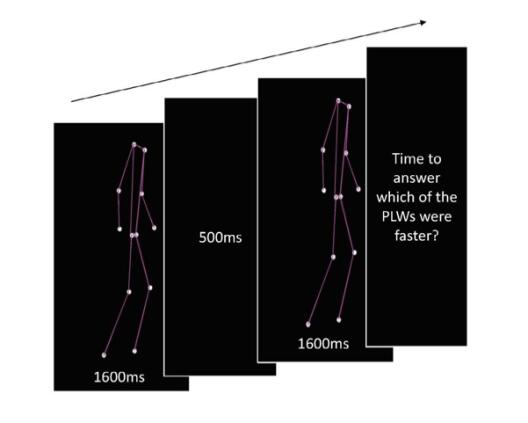Paper published in Journal of Down Syndrome & Chromosome Abnormalities

Abstract
The explanations for the motor learning deficits observed in individuals with Down Syndrome (DS) emphasize a complex interplay among the structural and functional body abnormalities of this population. To further comprehend how this pathological condition functions, researchers are now attempting to understand how visual and motor systems process information and how this processing correlates with the development of motor learning in individuals with DS. The purpose of the current study was to investigate whether individuals with DS are able to perceive and differentiate between visually presented sequences of biological motion that portrayed walking at different speeds. We tested 17 participants with DS and 17 typical develop individuals (CG) who were matched for age and gender on a task requiring subjects to make fine discriminations between biological motion stimuli in the form of point-light-walkers that walked at different speeds. Individuals with DS were unable to recognize differences in walking speeds between walkers, and also demonstrated slower reaction times on the task than the CG. The CG was able to perform the task well above chance level and faster than DS subjects. These results shed light on the biological motion processing capabilities of people with DS, and provide insights for future research in this field. doi: 10.4172/2472-1115.1000123

